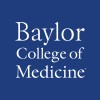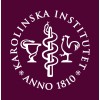
Efficacy and Safety Study of GS-9450 Treatment for 6 Months in Patients With Chronic Hepatitis C...
HCV InfectionThis is a Phase 2b, randomized, double-blind, parallel-group, placebo-controlled, multicenter study investigating the safety, tolerability and efficacy of two oral doses of GS-9450 in adults with chronic Hepatitis C Virus (HCV). Approximately 240 subjects 18-65 years of age who meet study entry criteria will be randomized (in other words, selected at random, like flipping a coin) to one of three treatment groups (80 subjects per treatment group) as follows:GS-9450 10 mg once daily,GS-9450 40 mg once daily, or matching placebo once daily. Following randomization, subjects will return within seven business days for a Baseline (Day 1) visit, at which time study medication will be dispensed and subjects will enter a 26 week treatment phase. During the treatment phase, subjects will receive study drug once daily for 24 weeks and then taper off of study drug over the following 2 weeks by receiving study drug once every other day for one week and then every 3 days for one week. Following completion of the treatment phase, subjects will enter a 4-week off-treatment follow-up phase.

A First in Human Study of AL-611 in Healthy Volunteers and Patients With Hepatitis C Virus Infection...
Hepatitis CThis randomized, double-blind, placebo-controlled, 3-part study will assess the safety, tolerability, pharmacokinetics (PK), and antiviral activity (Part 3 only) of orally administered AL-611 in healthy volunteers (HV; Parts 1-2) and subjects with CHC (Part 3). Part 1: HV will receive 1 of 5 single ascending doses (SAD) of AL-611 Part 2: Eight HV from Cohort 3 in Part 1 are planned to receive a second single dose of AL-611 or placebo (as per their randomized assignment in Part 1) in a fed state after a washout period Part 3: Subjects with CHC infection will receive 1 of 3 planned multiple ascending doses (MAD)

Anti-SARS Cov-2 T Cell Infusions for COVID 19
SARS-CoV 2Viral Infection1 moreThis is a dose-finding safety trial followed by a randomized pilot trial comparing administration of SARS-CoV2-specific T cells (SARS-CoVSTs) to standard of care treatment in hospitalized patients with COVID19 who are at high risk of requiring mechanical ventilation. The SARS-CoVSTs lines have been made at Baylor College of Medicine from healthy donors who have made a full recovery from COVID19. These cell lines were frozen for later use and will be thawed and used to treat patients who meet the eligibility criteria.

Treatment of SARS-CoV-2 Virus Disease (COVID-19) in Humans With Hemopurifier® Device
COVID-19This is an Early Feasibility Study (EFS) investigating the use of the Hemopurifier® in the treatment of SARS-CoV-2 Virus Disease (COVID-19).

Tobacco Use and the Risk of COVID-19 and Adverse Outcomes
COVID-19Respiratory Tract Infections6 moreThis is an observational study of pooled population-based samples in three Nordic countries. Country-specific data has already been analysed in previous studies in Sweden, Finland, and Norway. The primary objective is to examine the association between tobacco use, the risk of SARS-CoV-2 infection, and adverse Outcomes using pooled population-based samples.

A Study of Safety and Efficacy of ATI-2173 and Vebicorvir in Combination With Tenofovir Disoproxil...
Chronic Hepatitis bThis is a randomized, double-blinded, placebo-controlled, multi center, dose ranging study of safety and efficacy in volunteers with chronic hepatitis B virus infection. Volunteers will be administered multiple oral doses of ATI-2173 vebicorvir in combination with tenofovir disoproxil fumarate and assessed for safety and efficacy including blood tests to show how the body metabolizes and eliminates the investigational drug as well as how the drug effects the virus infection.

A Prospective, Open Label, Phase 1 Safety Study of Passive Immune Therapy During Acute Ebola Virus...
Acute Ebola Virus DiseaseThe objective of this Phase 1 safety study is to provide access to the potential therapeutic benefit of EBOV convalescent plasma containing antibodies to EBOV. The risk of exposure to plasma from donors who may be infected with other transfusion-transmitted pathogens, not detectable by current licensed donor testing procedures, will be mitigated by using pathogen inactivation to minimize the risk of the TTI from these donors, who would otherwise be deferred and ineligible for blood donation.

GS-5885, GS-9451 With Peginterferon Alfa 2a (PEG) and Ribavirin in Treatment-Naïve Subjects With...
Chronic Hepatitis CThis is a Phase 2, randomized, open-label exploratory study that will examine the antiviral efficacy, safety, and tolerability of Response guided treatment (RGT) with GS-5885 + GS-9451 + PEG/RBV (6 or 12 weeks), or Peginterferon Alfa 2a (PEG)/Ribavirin (RBV)alone (24 weeks) in treatment naïve subjects with chronic Hep C (HCV) infection with genotype (GT) 1 and IL28B CC genotype.

Epidemiology, Infectivity and Natural History of Hepatitis C Virus Infection
Hepatitis CHepatitis BThis study will evaluate hepatitis C virus (HCV) infection in blood donors who test positive for antibodies to this virus. Most HCV-infected people do not become ill and are not aware that they have hepatitis or have had it in the past. Some infected people recover completely, whereas others remain chronically infected. The study will try to define infectivity of anti-HCV positive individuals, routes of transmission of the virus, and the number of HCV-infected persons who have evidence of liver disease. Blood donors at the NIH Clinical Center or the Central Maryland Chapter of the American Red Cross who test positive for HCV may be eligible for this study. Participants will have a physical examination and history, including questions about socioeconomic status and current sexual practices. They will have 100 milliliters (ml) (6 tablespoons) of blood drawn at the first visit and 50 ml (3 tablespoons) drawn 3, 6, 9 and 12 months after the initial visit. Some participants may undergo plasmapheresis, a procedure for collecting additional plasma (the liquid portion of the blood). For this procedure, whole blood is collected through a needle placed in an arm vein. The blood circulates through a machine that separates it into its components. The plasma is then removed, and the red and white cells and platelets are returned to the body, either through the same needle used to draw the blood or through a second needle placed in the other arm. In some individuals, other body fluids (saliva, urine or semen) may also be collected. Participants may be asked to bring their household contacts and sexual partners to NIH for interview and blood testing for evidence of HCV infection and liver disease. Although this is not required for participation in the study, it would provide additional valuable information. Participants found to have chronic viral infection will be seen more often and will provide additional blood samples for routine medical care. Further medical evaluation may include X-rays or liver scans and referral to a specialist for additional tests or therapy. Ten people in this study will be recruited to participate in a secondary investigation to analyze changes in the level of HCV and the immune response to it, and to relate these changes to the degree of liver damage. In addition to blood collected for the primary study, participants in this investigation will have an additional 50 ml (3 tablespoons) of blood drawn from an arm vein every week for 10 weeks to measure levels of virus, ALT (a liver enzyme), and immune response.

ANRS HB 05 Multicenter Study Evaluating Efficacy and Safety of Clevudine Monotherapy Versus Tenofovir...
HBe Negative Chronic Hepatitis BHepatitis B Viral InfectionFor chronic HBV infection, an optimal pharmacological agent to promote recovery from chronic HBV infection would be one that inhibits HBV DNA polymerase, combined with the clearence from the liver of cccDNA to block HBV reactivation after the circulating viral burden has been eliminated by therapy. The activity of clevudine on cccDNA in combination with its potent antiviral activity on HBV polymerase makes it the optimal agent in combination with tenofovir for this protocol.
